
Entering the European agritourism market
Developing agritourism for the European market requires careful planning to create high-quality experiences that are immersive and authentic. Sustainable practices must be in place when considering agritourism. Direct sales are the major sales channels, so having a website and well-managed social media channels is important. Agritourism is still in its early stages, yet India, Colombia, South Africa and the Philippines are already amongst the competing destinations.
Contents of this page
1. What requirements and certifications must agritourism meet to be allowed on the European market?
The European tour operator market must comply by law with several regulations to ensure their travelling clients are safe and are protected financially. To do business with the European market you must align your business processes with theirs so you can meet their expectations. European tour operators will expect you to meet conditions they set in a Code of Conduct and/or Terms of Business. Sustainability in all areas of tourism provision is essential for all European tourism suppliers. You must include sustainable actions throughout all your business activities.
What are the mandatory and additional requirements that buyers have?
The mandatory and additional requirements for agritourism services are common across the sector. They include:
- The European Package Travel Directive
- General Data Protection Regulation (GDPR)
- Liability Insurance and Insolvency Protection
You can find out about them in the CBI study What are the requirements for tourism services on the European market?. The study will help you understand the legal, non-legal and common requirements for European tour operators. If you understand the requirements they are bound by and can adapt your business to meet their needs, they are more likely to do business with you. It is important to European buyers that they can trust their suppliers to meet their and their customers’ needs.
What are the requirements for niche markets?
Developing, changing or diversifying your business to offer agritourism requires careful planning. There are several steps to take. Agritourism experiences must be of a very high standard to provide that authentic and immersive experience sought by visitors. Above all, sustainable practices must be embedded into the business.
Undertake careful planning for your agritourism business
Before starting an agritourism business, be sure that it is the right fit for the farm or company. The most important factor to understand is that a successful agritourism business focuses on creating an enjoyable and immersive experience for visitors. Above all, they are interested in learning more about local lives, cultures and traditions.
You must create a warm, safe and inviting atmosphere for people to visit the farm. You may need to welcome visitors at times that suit them, like weekends, evenings and holiday periods. Your ability to manage agritourism activities alongside the everyday necessary tasks of the farm may therefore be important. Very importantly, the quality of guiding must be very high. Guides must be good communicators – engaging, inspiring, and able to fluently speak the visitors’ language.
Some clear steps to take as you develop your agritourism business:
- Assess your agritourism business and set goals. Ask yourself what activities you could offer and how you can provide them. Set goals for your agritourism business that are compatible with your farming business – for instance, how many tours to offer to generate the income required within a specific timeframe.
- Get informed about agritourism in your area and assess what other farms are doing. Network with other agritourism businesses and share information. Agritourism is closely linked to community-based tourism (CBT) and there may be CBT programmes you can connect with. Read the CBI study on opportunities for community-based tourism from Europe for more information about CBT.
- Connect with relevant farming and tourism organisations. Find out what help there is in your region for establishing agritourism, in the form of government bodies, specialist farming cooperatives, international aid agencies, non-governmental organisations and private sector companies. One example is Albania’s Agrotourism, which provides certification. See what skills development opportunities there might be in the agriculture sector.
- Join the Global Agritourism Network. This will help keep up with developments in the sector, and is free to join.
- Collaborate with other agritourism providers. Consider working with other farms/farmers to create a trail or route of agritourism experiences, particularly if you are located in a very remote area. Tourists are unlikely to travel very long distances for just one experience. They will be more interested in a rounded experience that includes two or more destinations.
- Contact your tourism board. Find out whether they promote agritourism on the tourist board website. Talk to them about what is important to agritourists who come to your country or region. Find out what support they could give you, like placing a link of yours on their website.
- Consult with potential customers. Ask friends, relatives and other contacts what they think of your ideas. Do they like them? What comments do they have? Take account of feedback to develop the best experiences.
- Plan how to market your tours. If you do not have a website, consider building one. You can also use social media channels (Facebook, Instagram, TikTok) to market your tours and drive customers to your website. The CBI study How to be a successful tourism company online can be a helpful tool.
- Decide how to sell your tours. This could be a mix of direct sales through your website or Facebook page, posting your listing on an agritourism platform, or using an online travel agency (OTA). See the section below on channels to get agritourism on the European market.
- Monitor and adapt. You should continuously monitor, review and adapt your business to always provide the best possible experience for your visitors. Of course, you must also ensure that your business is profitable too and that you are achieving your set goals.
Figure 1: Hands-on experiences like rice planting are popular agritourism activities
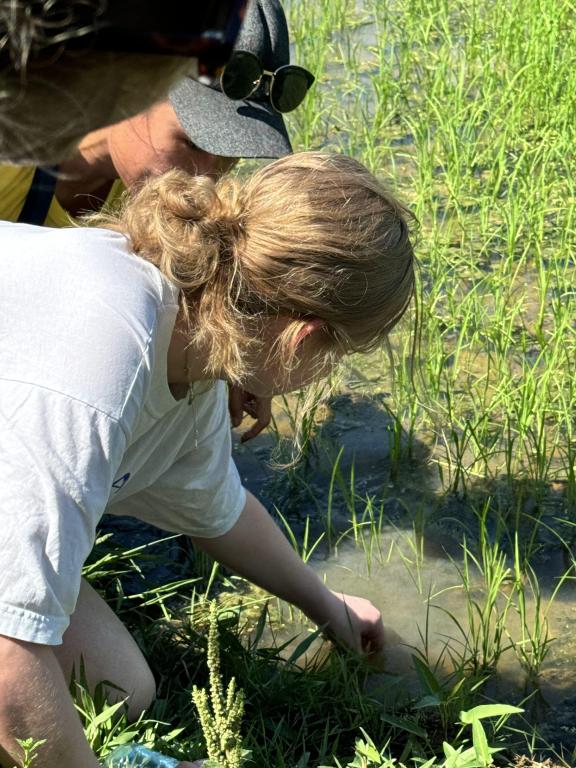
Source: Acorn Tourism Consulting, 2024
Offer high-quality on-farm tourism experiences
Agritourism experiences and activities must be immersive and hands-on. Visitors want to learn firsthand about life on your farm and in the region, and how farming relates to your way of life. You should provide high-quality agritourism experiences and consider the following during development:
- Guided farm tours should clearly explain and show farming processes. Use inspiring stories highlighting culture and tradition to engage your visitors and encourage immersion and participation. Make sure your tour has educational value too. Visitors should be able to try planting, harvesting, feeding animals, and so on, as well as interact with local people on the farm. Provide interpretation to help visitors understand the process from planting to harvesting, packaging and selling.
- Offer workshops that explore environmentally friendly farming techniques or make products, like pressing olive oil, weaving traditional mats from grasses, or cooking with farm produce. Cooking experiences are especially popular amongst European tourists these days.
- Offer dining experiences featuring traditional foods from farm produce and/or locally sourced produce. Be careful if the food you offer is very spicy – European tastes vary greatly in this respect.
- Take advantage of seasonal events such as Easter, Christmas or harvest time, to adapt your offer throughout the year.
- Ensure that clean and accessible toilet facilities are available, with clear signage and well-maintained pathways.
- Safety is also important: provide clear guidelines for interacting with animals, machinery, etc. Provide shaded areas for rest and protection from the sun. Fans are a good idea if your region is especially hot.
- Offer unique accommodations like yurts, cabins or tents when your agritourism business includes homestays, farmstays or on-site camping. Accommodations must be clean, safe and secure, with bedlinen and towels provided. Luxury is not necessary, but cleanliness for the European market is essential. There should also be private bathroom facilities if possible, or exclusive use of bathroom facilities if en suite is not possible.
- Consider partnering with local accommodation providers (if you do not offer accommodations yet) to encourage visitors to stay longer for an enhanced experience.
- Make sure you have the best guides, who are friendly and knowledgeable. Provide some training in hospitality and customer service. Consider employing someone who has a done an agritourism educational course, or provide training. There are remote learning offerings on the market, like the Agricultural tourism online course.
Agritourism South Africa has several materials to help farmers establish sustainable agritourism experiences. Take note of their list of practical ideas that could be built into your agritourism experience.
Figure 2: Ideas to incorporate into your agritourism experience
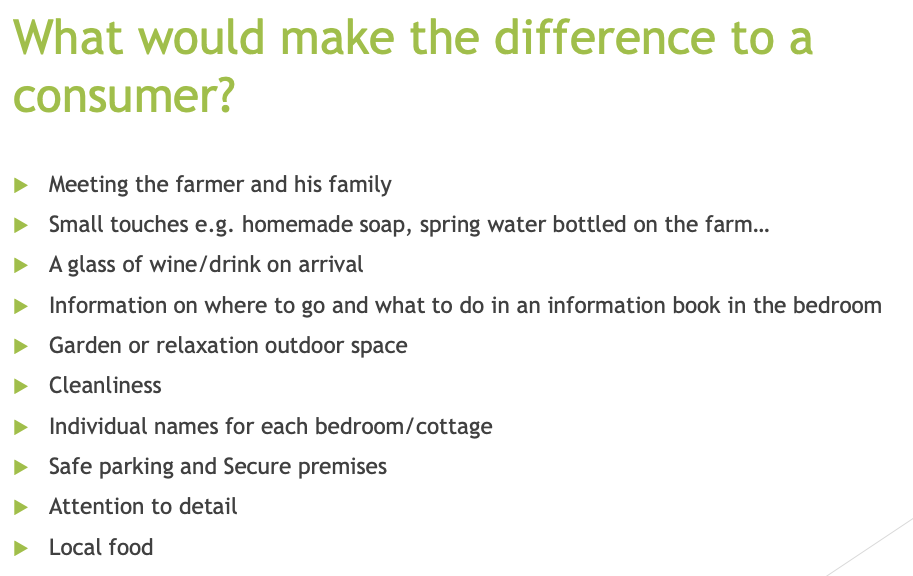
Source: Agritourism South Africa, 2017
Study these best-practice examples of agritourism experiences and note how they focus on providing an immersive experience for visitors:
- Agritourism and artisanal cheese production (Finca El Paraiso, Costa Rica)
- Banana brewing, cycling and volunteering (Emburara Farm Lodge, Uganda)
- Wet rice growing tour (Hanoi Eco Tours, Vietnam)
- Farming experience in Sri Lanka (Soul Sri Lanka)
Be a sustainable agritourism business
Successful agritourism strongly focuses on sustainability and responsibility. It is important that your farming business and associated agritourism activities be managed using sustainable principles, using organic (if possible) and recognised sustainable farming practices.
Sustainable agritourism is similar to sustainable community-based tourism (CBT). Community participation is the most important factor. Local people take the lead in managing and delivering tourism in their communities so they can develop economic independence, gain new skills, and foster pride in preserving their traditions and culture. This community-based approach is also suitable for agritourism.
Sustainability should be embedded throughout your business in the three areas of environmental stewardship, economic viability and social responsibility. Conserving habitats and encouraging biodiversity, employing local staff and paying them a fair wage, and delivering an authentic experience to agritourists are all part of being a sustainable tourism business.
By integrating sustainability into agritourism, you can ensure your farm remains workable and profitable while protecting the environment and making positive contributions to communities. This well-rounded approach benefits all involved – farmers, visitors, the local community and the planet.
Figure 3: Eight elements of a sustainable tourism business
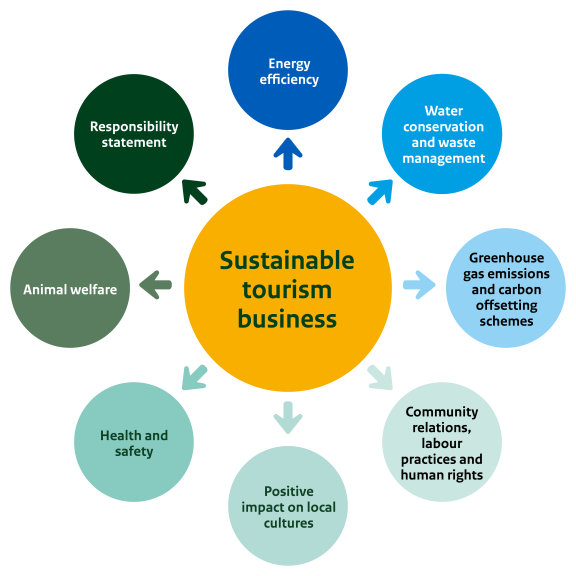
Source: Acorn Tourism Consulting, 2022
Three CBI studies can help you take steps to embed sustainability into your business:
- How to be a sustainable tourism business
- 10 tips to go green in the tourism sector
- 9 tips on how to become more socially responsible in the tourism sector
Tips:
- Take time to conduct a thorough analysis of your business so you can effectively integrate agritourism into the main farming business. You must understand your own business inside out.
- Start small with one or two tours so you can learn from your experiences, then adapt and expand when the time is right. This will help you keep track of the economic side of the business.
- Consult the CBI study Entering the European market for community-based tourism (CBT) to find out more about sustainability in CBT.
- Study the document A Guide to Successful Agritourism Enterprises as part of your research into setting up an agritourism business. It has lots of useful and detailed information which you can adapt for your business.
2. Through which channels can you get agritourism on the European market?
Agritourists look for quiet rural environments to enjoy authentic and immersive agritourism experiences. They are most likely to book experiences directly with the provider, or through a specialist platform or tour operator. Agritourism associations and other community-based organisations can offer support to businesses seeking to develop agritourism.
How is the end market segmented?
Agritourists are segmented by motivation and characteristics, broadly outlined as follows:
- Nature Enthusiasts: Agritourists particularly enjoy the outdoors, exploring rural landscapes and connecting with nature.
- Food Lovers: Agritourists care about where their food comes from and enjoy local, seasonal produce where possible.
- Families: Agritourism is a popular choice for families looking for educational and recreational activities that everyone can enjoy together.
- Adventure Seekers: Some agritourism activities can be more adventurous, like hiking, camping and partaking in farm activities.
- Environmentalists: Agritourism also attracts people who are concerned about environmental issues and interested in supporting sustainable farming practices.
- History and Culture Lovers: For those interested in history, culture and heritage, agritourism offers opportunities to learn about traditional farming methods, local customs and rural traditions.
Older travellers (aged 50+) dominate as the largest segment. They are experienced travellers, enjoy quiet rural environments and seek new experiences.
For more information about agritourists and how the end market is segmented, consult the agritourism market potential study.
Through which channels does a product reach the end market?
Agritourism is unlike many niche markets, in that experiences are usually directly sought by the agritourist, depending upon what interests them. Therefore, the most important sales channel for agritourism are direct sales. They account for around three-quarters of sales, as shown in the chart below.
Figure 4: Global sales channels for agritourism products
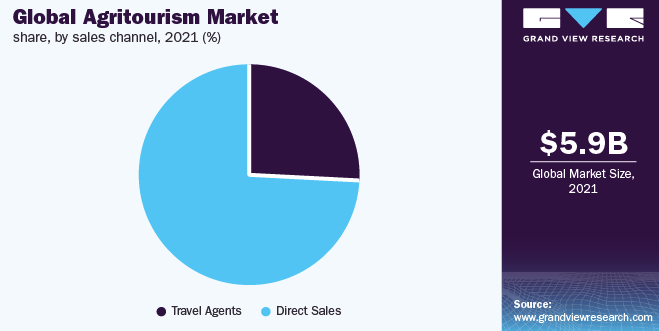
Source: Grand View Research, 2022
Other channels are specialist agritourism online travel agents (OTAs), specialist agritourism tour operators, destination management companies (DMCs) and general OTAs.
Figure 5: The sales process of agritourism experiences to the European market
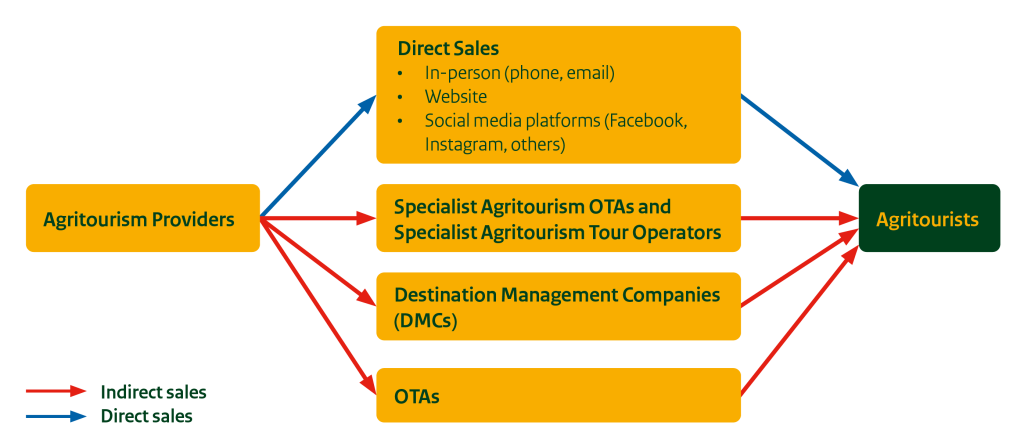
Source: Acorn Tourism Consulting, 2024
The sales channels are further explained below.
- Direct Sales: These are sales made directly through a website, by walking in, or by phone.
- Specialist Agritourism OTAs: Farm Stay Planet is an affiliate platform of Booking.com that promotes a wide range of farmstay properties across the world; Agritourism Africa is a South African platform; Bookagri is a Jordanian platform that is currently under development.
- Specialist Agritourism Tour Operators: include Field Farm Tours and Bay Farm Tours (UK), Farm to Farm international tours (New Zealand) and Worldpackers (USA), which is also a volunteer platform.
- Destination Management Companies (DMCs): may also promote agritourism experiences to inbound tourists. A DMC that sells farm tours as part of its packages is Total India DMC. 1 DMC World has several destinations, including South Africa, Vietnam, Colombia and the Philippines. European tour operators also use DMCs to find experiences for their clients, so if you can get listed with them it is also a way to reach European tour operators.
- Online Travel Agencies (OTAs): are another online sales channel used by agritourism businesses to sell their tours, and are widely used by European tourists to find and book travel experiences. Food and wine are the most common agritourism experiences featured on OTAs – check out Orbitz, Travelocity, Peek, Viator, GetYourGuide and Responsible Travel.
Research agritourism associations to network with
The Global Agritourism Network is a newly created organisation (April 2023). A year after launching, the network has 686 agritourism stakeholders in 87 different countries. The aim of the organisation is to build capacity for farmers, tourism professionals, researchers and other stakeholders to support agritourism worldwide. It also aims to promote sustainable farming and tourism practices. It is free to join.
Many countries have agritourism or community tourism associations to support small businesses diversify into tourism: Agri Tourism India, which has a Facebook page; Cobati, a community-based tourism initiative in Uganda that was one of the founding members of the Global Agritourism Network; Scottish Agritourism, a British agritourism association that was another founding member; Vietnam Community Based Tourism Network (VCBT-N); and the Kyrgyz Community Based Tourism Association (KCBTA).
You should research what relevant organisations exist in your own destination.
Tip:
- Consult the CBI study Entering the European market for community-based tourism for more information about reaching the European market. There are links to useful handbooks that will help you establish good standards and experiences for agritourists.
What is the most interesting channel for you?
First concentrate on direct sales. This means you need a good website so agritourists know how to make contact with you. Also use your social media channels to market your tours and drive visitors to your website. List your trips on any suitable agritourism platforms.
Tip:
- Assess your website if you have one, to see what improvements could be made. If you do not have a website, consider building one. Online website builders offer good value packages these days. The CBI study How to be a successful tourism business online is a helpful tool.
3. What competition do you face on the European agritourism market?
As agriculture is present in most countries around the world, agritourism is becoming more common as a means of diversifying and generating additional income to support the main purpose of farming. Therefore, agritourism has the potential to be very competitive. For now, agritourism can be considered to be in its infancy. Hence there are good opportunities for agritourism providers to be ahead of the crowd, develop agritourism sustainably and responsibly, and create immersive and authentic experiences for all types of visitors.
Which countries are you competing with?
Agritourism is gaining visibility worldwide. Some of the best places to enjoy agritourism experiences are India, South Africa, Colombia and the Philippines. You should also consider Brazil, Cambodia, Chile, Curaçao, Fiji, Grenada, Sri Lanka and Taiwan as competing destinations. But do not forget your local destinations – there are likely many farms near you that promote agritourism. Profiles of India, South Africa, Colombia and the Philippines are presented below.
India
Agriculture plays an important part in India’s economy. It accounts for 13% of the country’s GDP, and more than 65% of the population relies on agriculture for work. Agritourism is growing fast in India, with a continued expectation of a 19.9% CAGR (compound annual growth rate) between 2023 and 2028. Agritourism is now common across the country in states like Punjab, Maharashtra, Kerala, Karnataka and Rajasthan.
Agri Tourism India (ATDC) is an agritourism association that was established in 2005 by Pandurang Taware, credited with spearheading the agritourism concept in India. Established in the state of Maharashtra, ATDC works to empower rural economies, promote local agriculture, and help small farms be sustainable and provide good agritourism experiences. Since its inception, ATDC has empowered more than 600 farmers to diversify. You can read more about his journey to develop sustainable agritourism in the article Father of Agritourism.
The Punjab state is known as the ‘granary of India’, and has successfully integrated agritourism where visitors can experience life on a working farm, partake in farming activities and enjoy traditional Punjabi cuisine. Maharastra is the pioneer state for agritourism, connecting farmers with tourists and providing authentic rural experiences while benefiting the local farming communities. The state of Kerala is well known for its spice plantations. Its aromatic spice gardens and lush green landscapes provide good opportunities for agritourism.
Agritourism providers in India do face numerous challenges though. Many farmers still remain unaware of the potential benefits of agritourism and infrastructure, and accessibility is often poor in rural areas. Complex regulations and bureaucracy can be a barrier, and farmers often lack the skills needed to manage tourism activities. These skills are important to ensure high quality and standards demanded by European tourists.
TourdeFarm is an Indian farm activity and agritourism portal. It is dedicated to promoting diverse and authentic farm experiences along with farmstay accommodations. There are farmstays on the platform all over India, e.g. in Goa, Gujarat, Kerala, Mumbai and Pune, and experiences include food-based activities, fruit picking, organic farming and winery tours. The platform also enables users to sort by farm type, such as agri resorts, agrotourism centres, animal and fish farms, jungle farms, wellness farms and working farms.
South Africa
Agriculture and tourism are key contributors to the country’s economy. Agritourism has been around in South Africa for many decades. Early agritourism involved visits to game farms and ranches in the 1950s, followed by visits to ostrich farms for racing and riding. Wine tourism has been one of the most successful agritourism exports since the 1970s.
More farms are offering agritourism these days. A study conducted in 2021 found that economic benefits, job creation, community upliftment and preservation of cultures and habitats are the more important reasons for agritourism provision in South Africa. The most popular agritourism activities were found to be farmstays, hunting, hiking and nature trails, wildlife viewing and photography, cycling and farm tours.
South Africa has several agritourism routes. The Elgin Agritourism Route southeast of Cape Town was the first route to be established, and is known for apple orchards, wineries and dairy farms. The KZN South Coast Agritourism Route offers experiences like cheesemaking workshops, oyster farming tours, macadamia nut processing tours and visits to aloe vera plantations. The Route 62 Wine Route focuses on the wineries in the Western Cape Province along with ostrich farms and historical towns.
The Association of Agritourism South Africa (ASA) is an online platform for agritourism providers to list their experiences, and for tourists to book agritourism activities. It aims to empower farmers and rural communities to work together to promote agritourism and agritourism routes as well as create a sustainable environment within which to network and grow. South Africa’s vast travel distances mean that groups of farmers could effectively work together to create a trail.
ASA provides training to help establish agritourism for a small fee of R450 (€23). The platform also features NightsBridge, an online booking feature that connects to providers’ own property management systems.
Colombia
Agritourism in Colombia has been growing, and it is set to continue. The industry was estimated to be worth US$4.1 billion in 2023 and is forecast to be worth US$7.2 billion in 2032. This represents a CAGR of 6.2%. Demand for agritourism has flourished since the Colombian government began to focus on attracting foreign investment to bring tax benefits to investors.
Colombia has a rich agriculture sector (coffee, avocado, sugarcane, banana, pineapple, flowers and cocoa) and more than 50% of the land is agricultural. Colombia is also well-known for friendly and welcoming people who are keen to share their culture and traditions with visitors.
Coffee is one of Colombia’s best-known exports and symbolises the national culture of the country, so coffee agritourism experiences are especially popular and widespread. Activities are centred on several coffee-growing areas like Antioquia, Boyaca, Huila, Narino, Santander, the Sierra Nevada de Santa Marta and Tolima. Other agritourism experiences centre around Colombia’s ‘llaneros’ (cowboys) and rural farms. Tourists can enjoy horse riding while experiencing a day in the life of a farmer and seeing the wildlife.
Figure 6: Learning how coffee beans are processed in Colombia
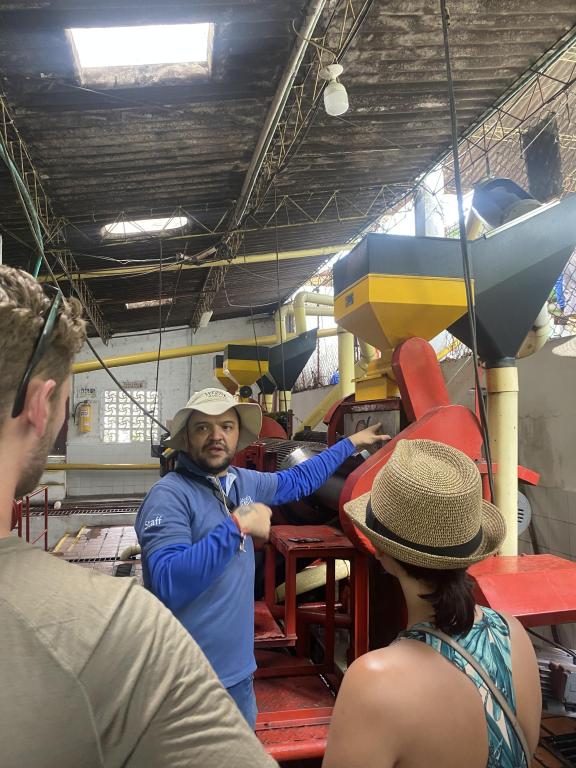
Source: Acorn Tourism Consulting, 2023
ACOTUR (Asociación Colombiana de Turismo Responsable) is the national organisation working to develop and promote responsible tourism in Colombia. Partners include rural accommodation sites, agricultural experiences, indigenous families, farmers and others.
The Philippines
Agritourism in the Philippines is commonly referred to as farm tourism. It is a thriving sector, actively supported by the government. In 2016, the Department of Tourism (DOT) launched the Farm Tourism Development Program to help farmers develop farm tourism. It provides financial assistance, training and marketing support to farmers seeking to diversify.
To support recovery after the pandemic, in 2022 DOT launched a Future Farms digital campaign, promoting farm tourism to encourage travellers to visit farms for a ‘breath of fresh air’. The campaign produced several videos to ‘must-see’ farms in the Philippines, including one for the Orchard Valley Farm in Iloilo. Read more about the Future Farms campaign on the Philippines tourist board website, Love the Philippines.
Popular farm tourism experiences in the Philippines include strawberry farms in Benguet in the northern mountainous province of Luzon, the Banaue Rice Terraces (a UNESCO World Heritage Site), coffee plantations in Bukidnon, and mango farms in the island province of Guimaras. The island province of Bohol in central Visayas is known for cacao farms and chocolate making.
Key Takeaways:
- Research agritourism and/or community-based tourism associations in your country or region. Find out what support they can give you to develop agritourism. They may be able to provide funds, help you raise funds, or provide skills development/training opportunities.
- Be aware of what is farmed in your region. Analyse what farms offer agritourism experiences to identify what is popular amongst tourists in the area.
- Invest in your staff. Train them well to provide high-quality tourism experiences. Research hospitality courses in your region.
Which companies are you competing with?
Companies you are competing with are generally other farms that offer agritourism, particularly those farming the same produce or providing similar services like farmstays or homestays. Other CBT programmes are also competing businesses. Carefully analyse what they offer to see what you can learn from them.
India
Sahakari Spice Farm is located in Goa, in an area known for its rich cultural heritage. The farm was developed in 1979 from barren land; today the area is a flourishing plantation with fruit trees, spices (including vanilla, cinnamon, nutmeg, cardamom and chilli) and medicinal herbs. Besides farm tours, there is a restaurant on site serving dishes made from produce grown on the farm. The farm also does agro-processing of cashew nuts and vanilla sourced from other local farms.
They have a simple website that is a good example of how to successfully promote a farm. The website also has interesting information about agro-processing, and customer testimonials widely praise the tours and the food.
Enchanted Forest Farm in the state of Sikkim offers a taste of village life in comfort. Activities include getting involved in organic farming, picnicking by the stream, birdwatching and walking around the 18-acre farm. It is off the beaten track and inaccessible by vehicle (a 15-minute walk to the property), which adds to its appeal for certain types of agritourists. The farmstay was featured in Condé Nast Traveller magazine in 2021.
The business also has a well-managed Instagram account with inspirational images, videos and highlights.
South Africa
IMLA Guest Farm is located on a working farm, Waterfall Farm, which is part of the IMLA Farm Group. It is located near the Marabeng Mountain range in the Eastern State. The farm provides a range of accommodation options, including camping, and is dedicated to providing local food and experiences to customers who stay on site. On its website, the farm clearly promotes the best practices it follows to align with agritourism.
Figure 7: Best practices for agritourism at IMLA Guest Farm
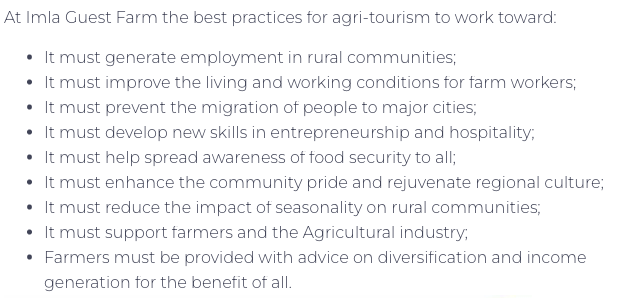
Source: Imla Guest Farm, 2024
This website is very detailed, offering good information about the farm and activities offered, including exploring the farm on foot, by bike or on horseback. The farm can also host weddings and events and is very committed to supporting the local workforce and their families through the IMLA Farm Workforce Empowerment philosophy. There is also a nice gallery of images on the website. The website links to the NightsBridge booking platform.
Primos Gin is located in the Limpopo Province, close to Kruger National Park. The farm grows citrus fruits from which they ferment and distil gin products. They offer farm tours, which includes a tour of the distillery and a meal overlooking the farm. There is also a tasting room. They make contributions to Elephants Alive from every purchase of their products. The Primos Gin website is a very simple, one-page site. It has good images and users can easily find what they need. There are also links to their social media platforms.
Theirs is a good example of a website that is likely easy to maintain and a good value. Some customer testimonials would make a good addition to the website through Tripadvisor or Google.
Colombia:
Hacienda Venecia is an authentic and working coffee farm located outside Manizales in the Central Andean Cordillera near Los Nevados National Park. The area is a UNESCO World Heritage Site for its unique coffee cultural landscape. It has been in operation for over 100 years and began offering agritourism experiences in 2009. The range of tours offered includes a coffee-cupping workshop and goes beyond coffee, with an artisan chocolate workshop and an artisan rum-making experience. Visitors can also stay overnight in the main house or purpose-built accommodations.
The business features details about its social and environmental policies. It provides employment for local people, supports the local primary school, and promotes apiculture (beekeeping) to help increase pollination of coffee plants. It is a member of ACOTUR and the Colombian hotel and hostel associations. The website is user-friendly and can be viewed in both English and Spanish. Ground coffee and coffee beans are available for purchase on the website.
Finca Mariposa is a Colombian coffee farmstay in Jardin, Antioquia, in the heart of the Andes. Overnight stays in the finca are the main attraction along with joining coffee tours. They also offer birdwatching and hiking tours, and cultural tours in the nearby city of Jardin. This is a good example of an agritourism business offering services beyond the farm which can help visitors engage further. A video is also featured on their homepage, which is another good idea to appeal to European tourists so they can see firsthand what the finca is all about.
Tours and accommodations can be booked through the website, and the finca is also available to book on Airbnb and Kayak.
Philippines
Vita Isola Leisure Farm offers a range of farming experiences. There is an organic farm and tours, fishing opportunities, aqua culture tours and a mangrove tour. Accommodations are also an option, and there is a restaurant on site that serves local dishes. The farm additionally offers corporate events. The website is nicely designed and has a contemporary feel with a scrolling image carousel on the homepage and a video. Images are inspirational and show all the activities that can be enjoyed at the farm.
Diaspora Farm Resort is an agritourism business that has a Facebook page but no website. It is one of the farms that featured in the Future Farms digital campaign. Its page is kept current with posts and videos. Guests are invited to book through Facebook’s message app. It would be a good idea for this farm to build its own website so that it can reach more customers.
Key Takeaways:
- Build a website if you want to reach the European market. Agritourism is not yet a mainstream niche tourism market. A well-designed, up-to-date and informative website will help you stay ahead of the competition as the niche continues to evolve and develop.
- Make sure you use a good mix of images and videos to describe what you do. Agriculture can be very photogenic, and pictures of visitors enjoying the great outdoors will be very appealing.
- Think about how people can book your tours. If you can enable online booking to your website it will appeal to European agritourists who like instant booking and confirmation.
Which products are you competing with?
The main competition for agritourism are other similar niches like CBT and cultural and heritage tourism in rural areas. By promoting agricultural practices, farming and hands-on farming activities you will be able to stand out in the marketplace.
4. What are the prices of agritourism on the European market?
Prices of agritourism products vary widely. They generally fall into two categories: experiences with accommodations (farmstays or homestays) and experiences without.
When setting your prices, make sure to include all the costs associated with running the tour – so also staff costs and any contributions to local initiatives supported by your farm. Like CBT, agritourists may be prepared to pay more for an agritourism experience if they know it makes a positive contribution to the lives of locals.
Table 1: Example prices of agritourism products on the European Market, June 2024
| Agritourism Experience | Country | Duration | Price pp (€) |
| Fish and Eat Experience | Philippines | 1 hour | 18.26 |
| Artisan Chocolate Workshop - from bean to bar | Colombia | 1.5 hours | 18.30 |
| A Day at the Farm: Organic Farm Tour | Philippines | 4-5 hours | 19.05 |
| Coffee Tour | Colombia | 2.5 hours | 19.44 |
| Guided Abalone Farm Tour & Tasting | South Africa | 1.5 hours | 23.01 |
| Microfinance Family Farm Tour | Tanzania | 3 hours | 32.76 |
| The Farm and River Ride (horseback) | Colombia | 3.5 hours | 43.45 |
| Wine Tour | South Africa | 5 hours | 46.99 |
| Guided tour of Batad Rice Terraces | Philippines | 6 hours | 47.47 |
| Goa Churches and Spice Farm Lunch Tour | India | 6 hours | 49.71 |
| E-Bike Guided Winery Tour | South Africa | 3.5 hours | 60.65 |
| Farm Stay at Nature Fruit Farm | Malaysia | 1 night | 61.55 |
| Experience the Real India - Once in a Lifetime Village Tour | India | 8 hours | 78.30 |
| Immersive Farming Experience and Cultural Culinary Discovery | Puerto Rico | 7 hours | 78.63 |
| Bohol Strawberry Farm Tour | Philippines | 8 hours | 118.67 |
| Farm Stay at Vienna Pleasance Cottage | Thailand | 1 night | 124.28 |
| Farm Stay at Kuhestan Farm Cottages | South Africa | 1 night | 176.83 |
| Local Farm Stay | Colombia | 2 days | 288.70 |
Source: Acorn Tourism Consulting, 2024
Use these online guides to help you price your tours:
Acorn Tourism Consulting Limited carried out this study on behalf of CBI.
Please review our market information disclaimer.
Search
Enter search terms to find market research
